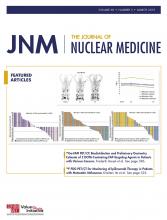TO THE EDITOR: We wish to respond to Siegel et al.’s most recent letter (1). In the interest of brevity, we confine our remarks to the evidence that refutes their first 2 points.
The vast majority of DNA double-strand breaks (DSBs) caused by ionizing radiation are repaired by nonhomologous end joining (NHEJ), which is an error-prone process (2–4). Ionizing radiation causes complex DSBs due to associated damage of the adjacent base pairs or clustering of multiple break points in the DNA backbone (5). Siegel et al. now suggest that “the repair fidelity of the damage produced by low-dose, low-LET (linear energy transfer) radiation associated with medical imaging may be no less than that by homologous recombination for endogenously induced damage” (emphasis added). The evidence regarding the different error rates for the various DNA repair mechanisms is critical to this discussion. DNA damage repair via homologous recombination (HR) is a high-fidelity, template-dependent repair pathway for complex DNA damage including DNA gaps, DNA DSBs, and DNA interstrand crosslinks (6). HR achieves this accuracy using homologous sequences found elsewhere in the genome to guide the repair process. Homologous sequences occur in sister chromatids, homologous chromosomes, or repeated regions of the same or different chromosomes.
In contrast to HR, nonhomologous end joining (NHEJ) leads to alterations in the underlying DNA sequence precisely because it is not template-dependent (2). NHEJ occurs throughout the entire cell cycle whereas HR primarily occurs during the late S and G2 phases. As a result, the vast majority of DSBs induced by ionizing radiation are repaired by NHEJ while HR is best suited to repairing DSBs that arise during DNA replication.
The importance of fidelity during in vivo DNA repair is highlighted by Behjati et al.’s analysis of DNA sequences obtained from radiation-associated second malignancies (7). They performed whole-genome sequencing of the tumors and compared that data with DNA sequences obtained from the same patient’s normal tissues. That comparison revealed 2 mutational signatures in the radiation-associated cancers that transcended tumor type: small deletions and balanced inversions. The structural features of the small deletions and their random distribution throughout the tumor’s genome indicated that radiation-induced DSBs and the subsequent error-prone repair by NHEJ were causal factors in these clinically relevant cancers.
When considering the evidence about whether mutations caused by ionizing radiation can cause clinically relevant cancers, Siegel et al. argue that “only epidemiologic studies … can decide the issue” (emphasis added). We disagree with this complete reliance on epidemiologic studies. Instead we suggest that data from both epidemiologic and mechanistic studies must be considered together if one wishes to elucidate the responsible causal chain.
We agree with Siegel et al. that readers are faced with a choice between 2 divergent viewpoints. Some readers might be comforted by the argument that exposure to the ionizing radiation used for medical imaging not only is harmless but also actually prevents cancer. However, the available evidence indicates that medical imaging is a double-edged sword. When properly used, medical imaging provides immense benefits. But like any tool, it can be overused and overuse of medical imaging carries risks.
Footnotes
Published online Jan. 10, 2019.
- © 2019 by the Society of Nuclear Medicine and Molecular Imaging.







